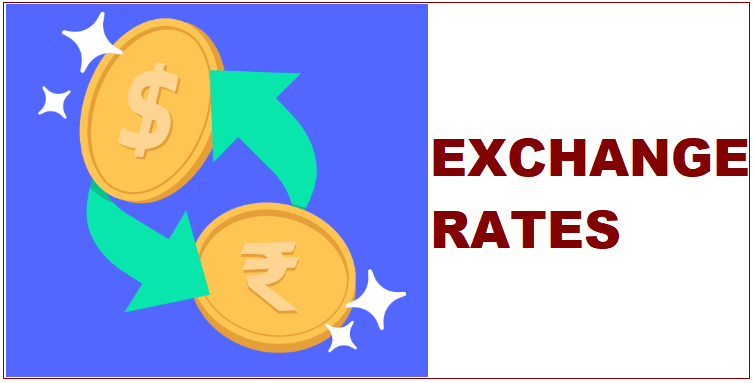Bank Exams Exam > Bank Exams Notes > SBI PO Prelims & Mains Preparation > Exchange Rates - All About to know
Exchange Rates - All About to know | SBI PO Prelims & Mains Preparation - Bank Exams PDF Download
Introduction
The exchange rate is the price of a country’s currency in terms of another country’s currency.
How to calculate Exchange rate?
- It is calculated by relating the value of one currency to other country currency
- In mathematical terms, Exchange rate = (price of domestic currency)/(price of foreign currency)
- Example: $1 = 65 rupees implies that one has to give 65 rupees to get $1
Who determines Exchange rate?
- After World War II, World Bank and IMF were formed to reconstruct the war-torn world nations
- IMF determined the exchange rate initially with the quota of the developed nations
- Later, UK withdraw from the fixed rate regime and fixed its own currency rate depending on market conditions
- Gradually, countries also started moving to the floating currency regime
- Currently, the central bank of nations have the power to determine the exchange rate by buying and selling currencies in the foreign exchange market
How to determine Exchange rate?
To determine the exchange rate, there are three generally used methods- Fixed exchange rate
- Floating exchange rate
- Crawling peg exchange rate
Fixed Exchange Rate
- Also called as pegged exchange rate
- Central bank of a nation fixes and maintains the exchange rate
- The domestic price of the currency will generally be set against US dollar or other world currency like Euro, Yen or IMF basket of currencies
- Central bank will sell and buy its own currency from the foreign exchange market against the pegged currency
- RBI has been following the fixed exchange rate till 1991
- Now complete fixed exchange rate regime has come to an end and only a combination of fixed and floating rate are employed in the foreign exchange market
Floating Exchange Rate
- Floating exchange rate is determined by demand and supply prevailing in the market
- Rate determined solely by the market
- Exchange rate constantly changes periodically (even on daily basis)
- Also termed as the self-correcting exchange rate
- When the demand for a currency in foreign exchange market becomes low, then its imports become expensive and ultimately its value will decrease
- This will cause heavy demand for goods and services domestically
- This, in turn, results in the creation of more jobs domestically
- Thus an automatic correction is made balancing the demand and supply in the floating currency regime
- The exchange rate changes in global scenario will affect the domestic currency in the floating rate regime
- Currently, this is the widely accepted and adopted currency regime by the world nations
Crawling Peg Exchange Rate
- Also known as Dirty Floating rate
- This is a combination of fixed and floating exchange rate
- Government allows the currency to fluctuate freely in a given band determined by the central bank
- Once the currency exceeds the band fixed by central bank, Government intervenes in the foreign exchange market to stabilise the domestic economy
Implications of Exchange rate
- Appreciation of exchange rate or rupee appreciation implies rise in exchange rate of rupee
- Depreciation of exchange rate or rupee depreciation implies fall in exchange rate of rupee
- Both appreciation and depreciation of currency occurs as a result of change in supply and demand of the currency in the foreign exchange market
- Depreciation of currency favours exports and makes imports costlier
- Appreciation of currency favours imports and makes exports costlier
- Devaluation of currency is similar to depreciation of currency
- India devalued its currency during the 1991 Balance of Payment crisis
- Recently China devalued its currency Yuan
- RBI has the power to devalue the rupee by selling more rupees and buying dollars from the foreign exchange market
- Similarly, RBI can revalue the rupee by selling dollars and buying rupees
- The activities of devaluation and revaluation of currency are associated with the fixed exchange rate regime
The document Exchange Rates - All About to know | SBI PO Prelims & Mains Preparation - Bank Exams is a part of the Bank Exams Course SBI PO Prelims & Mains Preparation.
All you need of Bank Exams at this link: Bank Exams
|
628 videos|824 docs|280 tests
|
|
628 videos|824 docs|280 tests
|
Download as PDF

|
Explore Courses for Bank Exams exam
|

|
Signup for Free!
Signup to see your scores go up within 7 days! Learn & Practice with 1000+ FREE Notes, Videos & Tests.
Related Searches
















